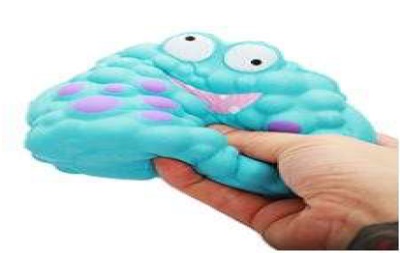| Some squishies found to emit harmful levels of volatile organic compounds (VOCs) | |||||||||||||||||||||||||||||||||||||||||||
|---|---|---|---|---|---|---|---|---|---|---|---|---|---|---|---|---|---|---|---|---|---|---|---|---|---|---|---|---|---|---|---|---|---|---|---|---|---|---|---|---|---|---|---|
| Regit Date | 2019-09-26 08:55:40 | Count | 54 | ||||||||||||||||||||||||||||||||||||||||
| Files | |||||||||||||||||||||||||||||||||||||||||||
|
Some squishies found to emit harmful levels of volatile organic compounds (VOCs) Accordingly, the Korea Consumer Agency (President Lee, Hee-sook) tested 12 products circulated and sold in the domestic market, and investigated their labelling, and found that some of the products tested emitted dimethylformamide(DMF), toxic to liver, causing symptoms such as mucous membrane irritation, dizziness, etc., thereby prompting consumers’ extra attention . [Squishy Toy]
□ Some squishies were found to emit harmful levels of dimethylformamide(DMF).
per hour. ㎥ /㎍to 16,137㎥ /㎍ The testing of 12 squishies revealed that all of the squishies tested emitted DMF, and the concentrations of DMF reached 54
The result of the risk assessment* of the emitted DMF showed that the emission rates of DMF of six(6)(50.0%) products could have negative health impacts on children aged less than three years old, and two(2) of them could pose health risks even to children aged 6 to 12 years old, if they are exposed to multiple squishy toys.
* Risk characterisation ratio(RCR), one of the risk assessment methodologies, is calculated by dividing the exposure estimate by age by the derived no-effect level(DNEL; the level of exposure to the substance above which humans should not be exposed). When the RCR exceeds the value of 1, this implies a toxicological concern for the exposure.
Currently, however, there is no standard for VOCs emission limits in children’s toys (e.g. squishies), and thus, it needs to prepare safety standards for toy materials, purpose of use, age for use, etc. □ Many toys for children did not meet the labelling requirements. All children’s toys must be affixed with appropriate labels (including ‘KC certification mark’) which bear information such as product name, model name, manufacturing date, minimum age for use, etc. on their packaging. With regard to the labelling requirements, it was found that the KC mark was affixed to all of the squishy toys tested, but 10(83.3%) products did not indicate some of the required information on their labels, requiring improvement.
Based on the results of the test and inspection, the KCA recommended the business operators that sold products presenting risks of injury to children to voluntarily take corrective measures, including sales suspension and product recall, and the business operators in question accepted the recommendation, deciding to recall their products. In addition, the KCA plans to request the Korean Agency for Technology and Standards ▲to establish standards for VOCs emission limits, depending on toy material, purpose of use, and age for use. Furthermore, the KCA advised consumers to avoid buying squishies smelling scented, and to keep squishy toys out of the reach of children, aged less than three(3) years, in particular. |
|||||||||||||||||||||||||||||||||||||||||||
| Next | Damage related to mobile communication services continues to occur in elderly consumers | ||||||||||||||||||||||||||||||||||||||||||
| Prev | Consumer Complaints About Overseas Deals Soar in 2018 | ||||||||||||||||||||||||||||||||||||||||||



